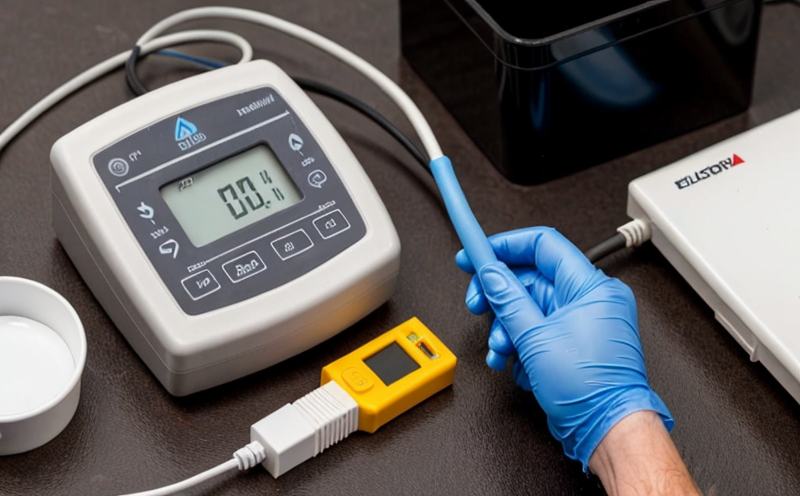USP 1225 Validation of Electrochemical Analytical Methods
The United States Pharmacopeia (USP) Chapter Chapter 1225 provides comprehensive guidelines for the validation of electrochemical analytical methods used in pharmaceutical research and development. This service is designed to ensure that these methods meet stringent quality standards, thereby ensuring the accuracy, precision, and reliability of analytical results.
Electrochemical methods are widely used for the analysis of various substances, including active pharmaceutical ingredients (APIs), excipients, and other drug products. The validation process under USP 1225 ensures that these methods can consistently deliver accurate results across different laboratories and over time. This is crucial in the pharmaceutical industry where reliability and reproducibility are paramount.
The validation process involves several key steps: method selection, optimization, characterization, and qualification. Each step requires rigorous testing to ensure that the analytical method meets the specified performance characteristics as outlined in USP 1225. The service we provide includes comprehensive support for all these aspects of validation.
During this process, a variety of instruments are used, including potentiometric titrators, coulometers, and voltammetric analyzers. These tools allow for precise measurement and analysis of the samples under test. The data generated from these tests is then analyzed to ensure that it meets the acceptance criteria specified in USP 1225.
The service also includes thorough documentation of all validation steps, ensuring compliance with regulatory requirements. This documentation is essential for maintaining quality control and ensuring that the methods can be replicated consistently across different laboratories.
Scope and Methodology
The scope of USP 1225 validation includes a wide range of electrochemical analytical methods used in pharmaceutical research and development. This service is particularly relevant for methods that involve potentiometric, coulometric, and voltammetric techniques.
- Potentiometric titrations
- Coulometry
- Voltammetry
The methodology involves several key steps:
- Method selection: Choosing the most appropriate method for the specific analytical need.
- Optimization: Fine-tuning the parameters of the method to ensure optimal performance.
- Characterization: Determining the characteristics and limitations of the method.
- Qualification: Demonstrating that the method meets the specified performance requirements.
The service we provide includes detailed documentation of all these steps, ensuring a comprehensive validation process. This approach ensures that the analytical methods used in pharmaceutical research and development are reliable and accurate.
The acceptance criteria for USP 1225 validation include precision, accuracy, linearity, range, specificity, detection limit, quantitation limit, robustness, and reproducibility. These criteria ensure that the methods can consistently deliver accurate results across different laboratories and over time.
Why Choose This Test
- Comprehensive validation process: Ensures that analytical methods meet stringent quality standards.
- Reproducibility: Methods are consistent across different laboratories.
- Reliability: Provides accurate and precise results for pharmaceutical research and development.
- Regulatory compliance: Ensures adherence to USP guidelines.
The service we provide offers a wide range of benefits, making it an essential tool for quality managers, compliance officers, R&D engineers, and procurement specialists. By choosing this test, you can ensure that your analytical methods are reliable and accurate, thereby enhancing the overall quality of your pharmaceutical products.
Use Cases and Application Examples
The USP 1225 validation service is applicable to a wide range of use cases in pharmaceutical research and development. These include:
- Development of new drug formulations
- Quality control during manufacturing processes
- Formulation optimization for improved efficacy
- Detection and quantitation of impurities and degradation products
The following table provides specific examples of how this validation service can be applied:
| Use Case | Description |
|---|---|
| New Drug Formulation Development | Validation ensures that the analytical method used in developing new drug formulations is reliable and accurate. |
| Quality Control During Manufacturing Processes | Consistent results are critical for ensuring product quality during manufacturing processes. |
| Formulation Optimization for Improved Efficacy | Validation helps in optimizing drug formulations to improve their efficacy. |
| Detection and Quantitation of Impurities and Degradation Products | Identification and quantification of impurities and degradation products are crucial for ensuring product safety. |
The service we provide ensures that all these use cases are covered, providing a comprehensive validation process. This approach enhances the overall quality of pharmaceutical products and ensures compliance with regulatory requirements.





